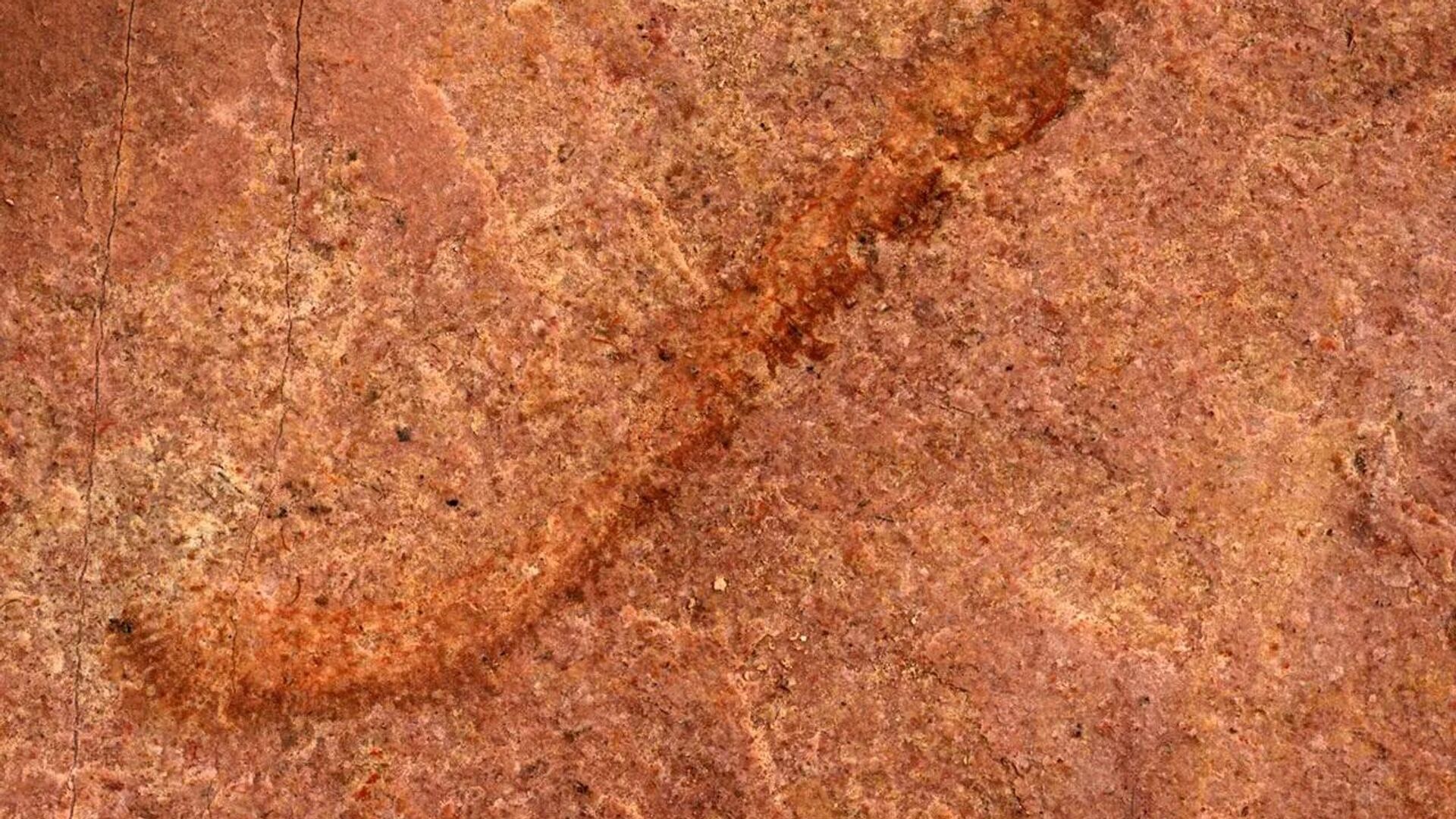https://sputnikglobe.com/20210914/scientists-discover-500-million-year-old-worm-like-fossil-called-palaeoscolecid-in-north-america--1089051473.html
Scientists Discover 500-Million-Year-Old 'Worm-Like' Fossil Called Palaeoscolecid in North America
Scientists Discover 500-Million-Year-Old 'Worm-Like' Fossil Called Palaeoscolecid in North America
Sputnik International
Other varieties of this fossil were previously found in much higher abundance in other continents, like Asia. According to the researchers, this discovery... 14.09.2021, Sputnik International
2021-09-14T07:37+0000
2021-09-14T07:37+0000
2022-08-06T13:32+0000
north america
fossil
science & tech
https://cdn1.img.sputnikglobe.com/img/07e5/09/0e/1089055087_0:388:1280:1108_1920x0_80_0_0_ad0d0d5422fb1ce0ed8c1ff3178b6dfd.jpg
Researchers at the University of Missouri have found a palaeoscolecid, a rare 500-million-year-old “worm-like” fossil which is an uncommon in North America. According to the researchers, this discovery can provide a better understanding about the diversity of Earth’s animals during the Cambrian explosion. The Cambrian explosion, which occurred about 530-540 million years ago, is considered the first major appearance in the fossil record of animal groups across the globe. This 'explosion' was crucial in identifying the pieces of the evolutionary map of modern animals. According to Jim Schiffbauer, an associate professor of geological sciences at the MU College of Arts and Science and one of the study’s co-authors, while this fossil has the same anatomical organisation as modern worms, it doesn’t perfectly match with anything we see today. The researchers believe that this palaeoscolecid most likely lived on an ocean floor.Leibach also said that this discovery is significant not just in North American paleontology, but also in evolution, paleogeography and paleoecology. The new taxon is named Arrakiscolex aasei after the fictional planet Arrakis in the novel “Dune” by Frank Herbert.
north america
Sputnik International
feedback@sputniknews.com
+74956456601
MIA „Rosiya Segodnya“
2021
Sushmita Panda
https://cdn1.img.sputnikglobe.com/img/07e5/05/12/1082926186_0:0:2048:2048_100x100_80_0_0_4474d0d7e27a36878eb8727832be74b4.jpg
Sushmita Panda
https://cdn1.img.sputnikglobe.com/img/07e5/05/12/1082926186_0:0:2048:2048_100x100_80_0_0_4474d0d7e27a36878eb8727832be74b4.jpg
News
en_EN
Sputnik International
feedback@sputniknews.com
+74956456601
MIA „Rosiya Segodnya“
Sputnik International
feedback@sputniknews.com
+74956456601
MIA „Rosiya Segodnya“
Sushmita Panda
https://cdn1.img.sputnikglobe.com/img/07e5/05/12/1082926186_0:0:2048:2048_100x100_80_0_0_4474d0d7e27a36878eb8727832be74b4.jpg
north america, fossil, science & tech
north america, fossil, science & tech
Scientists Discover 500-Million-Year-Old 'Worm-Like' Fossil Called Palaeoscolecid in North America
07:37 GMT 14.09.2021 (Updated: 13:32 GMT 06.08.2022) Other varieties of this fossil were previously found in much higher abundance in other continents, like Asia. According to the researchers, this discovery underscores the unsolved mysteries of the prehistoric world's environment and ecology.
Researchers at the University of Missouri have found a palaeoscolecid, a rare 500-million-year-old “worm-like” fossil which is an uncommon in North America. According to the researchers, this discovery can provide a better understanding about the diversity of Earth’s animals during the Cambrian explosion.
The Cambrian explosion, which occurred about 530-540 million years ago, is considered the first major appearance in the fossil record of animal groups across the globe. This 'explosion' was crucial in identifying the pieces of the evolutionary map of modern animals.
According to Jim Schiffbauer, an associate professor of geological sciences at the MU College of Arts and Science and one of the study’s co-authors, while this fossil has the same anatomical organisation as modern worms, it doesn’t perfectly match with anything we see today. The researchers believe that this palaeoscolecid most likely lived on an ocean floor.
“It is the first known palaeoscolecid discovery in a certain rock formation — the Marjum Formation of western Utah — and that’s important because this represents one of only a few palaeoscolecid taxa in North America,” Wade Leibach, an MU graduate teaching assistant in the College of Arts and Science, and lead author on the study said.
Leibach also said that this discovery is significant not just in North American paleontology, but also in evolution, paleogeography and paleoecology. The new taxon is named Arrakiscolex aasei after the fictional planet Arrakis in the novel “Dune” by Frank Herbert.




